Papers by Dr. Garima Kapoor

Current Topics in Medicinal Chemistry, Feb 1, 2023
: Iridoids are secondary plant metabolites that are multitarget compounds active against various ... more : Iridoids are secondary plant metabolites that are multitarget compounds active against various diseases. Iridoids are structurally classified into iridoid glycosides and non-glycosidic iri-doids according to the presence or absence of intramolecular glycosidic bonds; additionally, iridoid glycosides can be further subdivided into carbocyclic iridoids and secoiridoids. These monoterpe-noids belong to the cyclopentan[c]-pyran system, which has a wide range of biological activities, including antiviral, anticancer, antiplasmodial, neuroprotective, anti-thrombolytic, antitrypanoso-mal, antidiabetic, hepatoprotective, anti-oxidant, antihyperlipidemic and anti-inflammatory proper-ties. The basic chemical structure of iridoids in plants (the iridoid ring scaffold) is biosynthesized in plants by the enzyme iridoid synthase using 8-oxogeranial as a substrate. With advances in phyto-chemical research, many iridoid compounds with novel structure and outstanding activity have been identified in recent years. Biologically active iridoid derivatives have been found in a variety of plant families, including Plantaginaceae, Rubiaceae, Verbenaceae, and Scrophulariaceae. Iridoids have the potential of modulating many biological events in various diseases. This review highlights the multitarget potential of iridoids and includes a compilation of recent publications on the phar-macology of iridoids. Several in vitro and in vivo models used, along with the results, are also in-cluded in the paper. This paper's systematic summary was created by searching for relevant iridoid material on websites such as Google Scholar, PubMed, SciFinder Scholar, Science Direct, and oth-ers.The compilation will provide the researchers with a thorough understanding of iridoid and its congeners, which will further help in designing a large number of potential compounds with a strong impact on curing various diseases.

Current Bioactive Compounds
Introduction: Cardiovascular disorders are the most prevalent and life-threatening conditions aff... more Introduction: Cardiovascular disorders are the most prevalent and life-threatening conditions affecting human beings. Therefore, this study aimed to assess the cardioprotective effect of P. rubra leaves. Aim: Plumeria rubra L. has been used for ages in alternative/traditional systems of medicine for several conditions, such as arthritis, toothache, pruritus, asthma, dysuria, gonorrhoea, diabetes, and various types of inflammation. Methods: Acute toxicity studies were performed using OECD 423 guidelines, and cardiomyopathy was induced in Wistar albino rats through an intraperitoneal injection of doxorubicin hydrochloride. Different groups were established to study the efficacy of doxorubicin-treated P. rubra leaf extract for 7 days. Blood pressure of both systolic and diastolic was recorded with noninvasive blood pressure apparatus, and the mean was considered. Biochemical parameters were analysed for serum and tissue homogenate viz. lactate dehydrogenase (LDH), thiobarbituric acid r...
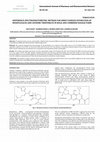
International Journal of Pharmacy and Pharmaceutical Sciences, 2015
Objective: To develop rapid, accurate, reproducible, validated and economical difference spectros... more Objective: To develop rapid, accurate, reproducible, validated and economical difference spectroscopy method for the simultaneous determination of moxifloxacin (MFN) and cefixime (CEF) in tablet dosage forms. Methods: The method comprised the measurement of the absorbance of a solution of the tablet extract in 0.1 M NaOH relative to that of an equimolar solution in 0.1 M HC1 at 254 nm for MFN and 292 nm for CEF. The presence of identical isosbestic points for pure drug solutions and tablet extracts indicated the non-interference of excipients in the absorption at these wavelengths. Results: The method was found to be linear over the concentration range of 10-50 μg/ml for CEF and 4-20 μg/ml for MFN. Accuracy was found to be in the range of 99.91-101.18%. Relative standard deviation for precision and intermediate precision was found to be less than 2%. The developed method was successfully applied for the simultaneous estimation of Moxifloxacin and Cefixime in tablet formulation. The ...

Current Organic Chemistry, 2021
The heterocyclic compounds have a great significance in medicinal chemistry because they have ext... more The heterocyclic compounds have a great significance in medicinal chemistry because they have extensive biological activities. Cancer is globally the leading cause of death and it is a challenge to develop appropriate treatment for the management of cancer. Continuous efforts are being made to find a suitable medicinal agent for cancer therapy. Nitrogencontaining heterocycles have received noteworthy attention due to their wide and distinctive pharmacological activities. One of the most important nitrogen-containing heterocycles in medicinal chemistry is ‘quinazoline’ that possesses a wide spectrum of biological properties. This scaffold is an important pharmacophore and is considered a privileged structure. Various substituted quinazolines displayed anticancer activity against different types of cancer. This review highlights the recent advances in quinazoline based molecules as anticancer agents. Several in-vitro and in-vivo models used along with the results are also included. A ...
Indian Journal of Pharmaceutical Education and Research, 2019
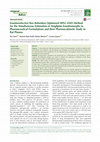
Advanced Pharmaceutical Bulletin, 2019
Purpose: A stereoselective high performance liquid chromatographic analytical method withphotodio... more Purpose: A stereoselective high performance liquid chromatographic analytical method withphotodiode array detector was developed and validated as per the International Conferenceon Harmonization (ICH) guidelines for the determination of alogliptin (ALO) enantiomers informulations and rat plasma.Methods: Enantiomeric separation was performed on a Phenomenex Lux Cellulose-2 chiralcolumn. Box-Behnken design was used to identify the optimum conditions of the threeindependent variables for the desired output responses.Results: The HPLC peaks of ALO enantiomers and the internal standard pioglitazone wereachieved before 8 min with a resolution of 0.77 min between R and S enantiomer and resolutionof more than 2.0 between each enantiomer and pioglitazone (internal) with more than 95%recovery. The linearity range and the limit of quantification of both the enantiomers in rat plasmawere 10-70 ng mL-1 and 1.2 ng mL-1 respectively.Conclusion: The developed method after validation was successfull...

CNS & Neurological Disorders - Drug Targets, 2020
Alzheimer’s Disease (AD) is a chronic, devastating dysfunction of neurons in the brain leading to... more Alzheimer’s Disease (AD) is a chronic, devastating dysfunction of neurons in the brain leading to dementia. It mainly arises due to neuronal injury in the cerebral cortex and hippocampus area of the brain and is clinically manifested as a progressive mental failure, disordered cognitive functions, personality changes, reduced verbal fluency and impairment of speech. The pathology behind AD is the formation of intraneuronal fibrillary tangles, deposition of amyloid plaque and decline in choline acetyltransferase and loss of cholinergic neurons. Tragically, the disease cannot be cured, but its progression can be halted. Various cholinesterase inhibitors available in the market like Tacrine, Donepezil, Galantamine, Rivastigmine, etc. are being used to manage the symptoms of Alzheimer’s disease. The paper’s objective is to throw light not only on the cellular/genetic basis of the disease, but also on the current trends and various strategies of treatment including the use of phytopharma...

Current Organic Chemistry
The heterocyclic compounds have a great significance in medicinal chemistry because they have ext... more The heterocyclic compounds have a great significance in medicinal chemistry because they have extensive biological activities. Cancer is globally the leading cause of death and it is a challenge to develop appropriate treatment for the management of cancer. Continuous efforts are being made to find a suitable medicinal agent for cancer therapy. Nitrogencontaining heterocycles have received noteworthy attention due to their wide and distinctive pharmacological activities. One of the most important nitrogen-containing heterocycles in medicinal chemistry is ‘quinazoline’ that possesses a wide spectrum of biological properties. This scaffold is an important pharmacophore and is considered a privileged structure. Various substituted quinazolines displayed anticancer activity against different types of cancer. This review highlights the recent advances in quinazoline based molecules as anticancer agents. Several in-vitro and in-vivo models used along with the results are also included. A ...

Current Bioactive Compounds
Aim: Plumeria rubra L. has been used for ages in alternative/traditional systems of medicine for ... more Aim: Plumeria rubra L. has been used for ages in alternative/traditional systems of medicine for several conditions, such as arthritis, toothache, pruritus, asthma, dysuria, gonorrhoea, diabetes, and various types of inflammation. Introduction: Cardiovascular disorders are the most prevalent and life-threatening conditions affecting human beings. Therefore, this study aimed to assess the cardioprotective effect of P. rubra leaves. Method: Acute toxicity studies were performed using OECD 423 guidelines, and cardiomyopathy was induced in Wistar albino rats through an intraperitoneal injection of doxorubicin hydrochloride. Different groups were established to study the efficacy of doxorubicin-treated P. rubra leaf extract for 7 days. Blood pressure of both systolic and diastolic was recorded with non-invasive blood pressure apparatus, and the mean was considered. Biochemical parameters were analysed for serum and tissue homogenate viz. lactate dehydrogenase (LDH), thiobarbituric acid r...

Current Bioactive Compounds, May 22, 2023
Introduction: Cardiovascular disorders are the most prevalent and life-threatening conditions aff... more Introduction: Cardiovascular disorders are the most prevalent and life-threatening conditions affecting human beings. Therefore, this study aimed to assess the cardioprotective effect of P. rubra leaves. Aim: Plumeria rubra L. has been used for ages in alternative/traditional systems of medicine for several conditions, such as arthritis, toothache, pruritus, asthma, dysuria, gonorrhoea, diabetes, and various types of inflammation. Methods: Acute toxicity studies were performed using OECD 423 guidelines, and cardiomyopathy was induced in Wistar albino rats through an intraperitoneal injection of doxorubicin hydrochloride. Different groups were established to study the efficacy of doxorubicin-treated P. rubra leaf extract for 7 days. Blood pressure of both systolic and diastolic was recorded with noninvasive blood pressure apparatus, and the mean was considered. Biochemical parameters were analysed for serum and tissue homogenate viz. lactate dehydrogenase (LDH), thiobarbituric acid reactive substance (TBARS), reduced glutathione (GSH), superoxide dismutase (SOD), and catalase (CAT). Results: The LD50 cut-off range for the leaf extract was found to be 2,000 mg/kg body weight. P. rubra leaf extract prevented the increase in heart rate (364.8 BPM) and mean blood pressure (122.24 mmHg) and demonstrated good results as an antihypertensive agent. The treatment with the extract was also found to revert the oxidative stress levels, as depicted by the MDA, SOD, and catalase levels in heart tissue in treated rats. Conclusion: P. rubra leaf extract at a higher dose (200 mg/kg) exerted a compelling cardioprotective action against cardiomyopathy induced by doxorubicin in Wistar rats due to the presence of lignan glycoside, liriodendrin.

Current Organic Chemistry, Mar 1, 2021
The heterocyclic compounds have a great significance in medicinal chemistry because they have ext... more The heterocyclic compounds have a great significance in medicinal chemistry because they have extensive biological activities. Cancer is globally the leading cause of death and it is a challenge to develop appropriate treatment for the management of cancer. Continuous efforts are being made to find a suitable medicinal agent for cancer therapy. Nitrogencontaining heterocycles have received noteworthy attention due to their wide and distinctive pharmacological activities. One of the most important nitrogen-containing heterocycles in medicinal chemistry is ‘quinazoline’ that possesses a wide spectrum of biological properties. This scaffold is an important pharmacophore and is considered a privileged structure. Various substituted quinazolines displayed anticancer activity against different types of cancer. This review highlights the recent advances in quinazoline based molecules as anticancer agents. Several in-vitro and in-vivo models used along with the results are also included. A subpart briefing natural quinazoline containing anticancer compounds is also incorporated in the review.

Cns & Neurological Disorders-drug Targets, Dec 31, 2020
Alzheimer’s Disease (AD) is a chronic, devastating dysfunction of neurons in the brain leading to... more Alzheimer’s Disease (AD) is a chronic, devastating dysfunction of neurons in the brain leading to dementia. It mainly arises due to neuronal injury in the cerebral cortex and hippocampus area of the brain and is clinically manifested as a progressive mental failure, disordered cognitive functions, personality changes, reduced verbal fluency and impairment of speech. The pathology behind AD is the formation of intraneuronal fibrillary tangles, deposition of amyloid plaque and decline in choline acetyltransferase and loss of cholinergic neurons. Tragically, the disease cannot be cured, but its progression can be halted. Various cholinesterase inhibitors available in the market like Tacrine, Donepezil, Galantamine, Rivastigmine, etc. are being used to manage the symptoms of Alzheimer’s disease. The paper’s objective is to throw light not only on the cellular/genetic basis of the disease, but also on the current trends and various strategies of treatment including the use of phytopharmaceuticals and nutraceuticals. Enormous literature survey was conducted and published articles of PubMed, Scifinder, Google Scholar, Clinical Trials.org and Alzheimer Association reports were studied intensively to consolidate the information on the strategies available to combat Alzheimer’s disease. Currently, several strategies are being investigated for the treatment of Alzheimer’s disease. Immunotherapies targeting amyloid-beta plaques, tau protein and neural pathways are undergoing clinical trials. Moreover, antisense oligonucleotide methodologies are being approached as therapies for its management. Phytopharmaceuticals and nutraceuticals are also gaining attention in overcoming the symptoms related to AD. The present review article concludes that novel and traditional therapies simultaneously promise future hope for AD treatment.
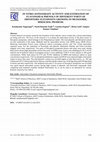
Eur. Chem. Bull., 2023
Various diseases are mainly caused by the formation of free radicals, and to counter this, variou... more Various diseases are mainly caused by the formation of free radicals, and to counter this, various antioxidants are being used now. The focus of the research is to evaluate the antioxidant activity of the plant extract of Dryopteris juxtaposita, which belongs to the Polypodiaceae family. The total phenolic and flavonoid content are also mentioned in this study. Methods used for antioxidant activity were DPPH assay, FRAP (Ferric Reducing Antioxidant Power) assay, hydroxyl radical scavenging activity, and TAC (Total antioxidant capacity) assay. For the estimation of flavonoids and phenols, aluminium chloride and Folin-Ciocalteu reagents were used, respectively. Two parts of Dryopteris juxtaposita (leaves and stem) were used, among them leaves shown high antioxidant activity then stem. In DPPH assay, leaves were inhibiting 93.36 % of free radicals and in hydroxyl radical scavenging activity it were inhibiting 73.08 % of free radicals at 100 µg/ml concentration. While stem shown 81.17% and 70.59% inhibition of DPPH and hydroxyl radical at same concentration respectively. TAC by phosphomolybdenum reagent and FRAP assay depicted higher antioxidant values in leaves then stem. The total phenolic content was recorded higher in stem than leaves, i.e., 397 mg GAE/g and 159.5 GAE/g respectively whereas, total flavonoids content was 33.66 mg QA/g and 6.06 mg QA/g in leaves and stem respectively. The methanol and water (7:3) extract of Dryopteris juxtaposita was recorded very good natural antioxidant activity having high content of phenolic and flavonoid compounds while comparing with marketed available standard Antioxidant. So, it can be used as an alternative for various diseases caused by free radical.
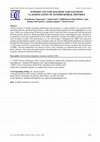
Eur. Chem. Bull., 2023
Today's scenario of rapidly increasing antibacterial drug resistance is a major problem. So, to p... more Today's scenario of rapidly increasing antibacterial drug resistance is a major problem. So, to prevent from microbial infection and multi-drug resistance AMPS (antimicrobial peptides) has been highlighted in recent years. AMPS are a unique group of shorter to longer chain of molecules that can target and resist the bacterial infection directly. However, identifying AMPS by lab-experiments is time consuming and costly. Therefore, it is significant to develop computational tool for AMPS prediction. Though some AMPS prediction tools have been developed recently, their performances are not well enough to distinguish the AMPS from anticancer peptides and anti-diabetic peptides. In this systematic study, the selected 180 peptide's predictions are analyzed through the SVM (Support Vector Machine) machine learning method. In addition to SVM, Gaussian classifier is used in this research for optimizations. The linear SVM method shows the best model for the classification of AMPS. The best performance was shown in class of zero violations as compared with class of one, two, three violations. This study anticipated smaller chain dipeptides show high potency against antibacterial drug resistance and prevent bacterial infections.

CNS & Neurological Disorders - Drug Targets
Alzheimer’s Disease (AD) is a chronic, devastating dysfunction of neurons in the brain leading to... more Alzheimer’s Disease (AD) is a chronic, devastating dysfunction of neurons in the brain leading to dementia. It mainly arises due to neuronal injury in the cerebral cortex and hippocampus area of the brain and is clinically manifested as a progressive mental failure, disordered cognitive functions, personality changes, reduced verbal fluency and impairment of speech. The pathology behind AD is the formation of intraneuronal fibrillary tangles, deposition of amyloid plaque and decline in choline acetyltransferase and loss of cholinergic neurons. Tragically, the disease cannot be cured, but its progression can be halted. Various cholinesterase inhibitors available in the market like Tacrine, Donepezil, Galantamine, Rivastigmine, etc. are being used to manage the symptoms of Alzheimer’s disease. The paper’s objective is to throw light not only on the cellular/genetic basis of the disease, but also on the current trends and various strategies of treatment including the use of phytopharma...
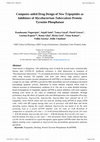
YMER, 2022
Tuberculosis is ubiquitous, 13th underlying cause of death & second major communicable disease af... more Tuberculosis is ubiquitous, 13th underlying cause of death & second major communicable disease after COVID-19. Antibiotic resistance is chief obstruction in treatment of "Mycobacterium tuberculosis." To accomplish prevention from extensively drug resistant & multi drug resistant TB peptides with least side effects, high potency against Mycobacterium protein tyrosine phosphatase-B (mPTPB) is in demand, which is chosen as a target for our study. mPTPB is pivotal for Mtb intracellular survival resulting in decreased macrophage apoptotic activity, demolition of innate immune response which leads to reduced secretion of inflammatory cytokines IL-6. Our aim is to study detailed dockingbased investigations of tripeptides against mPTPB as potent inhibitors with more negative docking score based on ΔG value in comparison with standard cefsulodin. Through preliminary drug like filters of Lipinski rules and Molinspiration, five tripeptides (
Pharmacologyonline, 2021
This study mainly deals with isolation and elucidation of structure of constituents taken from th... more This study mainly deals with isolation and elucidation of structure of constituents taken from the root bark of
Arnebia nobilis extract. Hydroxynaphthoquinones and isohexenylnaphthazarines mainly isolated by roots of
different species of the family Boraginaceae. They were reported to have antimicrobial, anticancer and healing of
wounds are main properties of these derivatives. The plant is subjected to prior screening related to phytochemical,
physicochemical (IR, TLC and Mass) and pharmacological. The results showed that the plant is responsible for
antioxidant properties and also the root extract have shown maximum antioxidant potency with IC50 value of 4.2
μg/ml when compared with standard ascorbic acid with IC 50 value of 4.6 μg/ml. The findings concluded that these
drugs are better serving the society with reduced cost.
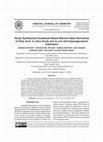
Oriental Journal of Chemistry, 2018
A receptor peroxisome proliferator activated receptor-gamma was targeted by series of new fatty a... more A receptor peroxisome proliferator activated receptor-gamma was targeted by series of new fatty acid chemical entities (M1- M22) which was designed, synthesized and characterized by spectral analysis. Metabolites molecular properties were calculated using Lipinski’s rule of five using molinspiration online software. Docking studies were done on co-crystallized protein structure of PPAR γ, PDB-1FM9 showing M15, M17 and M8 to be best located in the active sites with scores -10.43, -10.21 and -10.00 respectively. The free binding energy estimation was done using model of Maestro 9.0 (Schrodinger) and lies between -80.15 to -61.26 kcal/mol which is significant as compared to that of standard (-48.58 Kcal/mol). Nine best docked derivatives were evaluated in-vivo for oral glucose tolerance and antihyperglycemic activity by streptozotocin induced diabetes model and M15 exhibited most promising antidiabetic activity more than the standard glibenclamide. The promising results encourage futur...
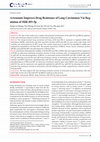
Bioorganic chemistry, Jan 13, 2018
A series of new benzothiazole-1,3,4-oxadiazole-4-thiazolidinone hybrid analogs (Tz1-Tz28) were sy... more A series of new benzothiazole-1,3,4-oxadiazole-4-thiazolidinone hybrid analogs (Tz1-Tz28) were synthesized in search of potential anti-diabetic agents. Molecular docking study was conducted with binding pocket of peroxisome proliferator activated receptor-gamma to elucidate the binding interactions of newly synthesized targets. Seven selected compounds with best docking scores were further screened for in vivo anti-hyperglycemic efficacy by oral glucose tolerance test in non-diabetic rats and on streptozotocin induced diabetic rat models. All the tested compounds demonstrated excellent to moderate reduction in blood glucose levels. Three of the compounds (Tz21, Tz7 and Tz10) showed excellent anti-diabetic effect by reducing concentration of glucose to 157.15 ± 1.79 mg/dL, 154.39 ± 1.71 mg/dL, 167.36 ± 2.45 mg/dL, respectively better than the standard drug, pioglitazone, 178.32 ± 1.88 mg/dL. Moreover, three derivatives Tz21, Tz4 and Tz24 with IC50 values of 0.21 ± 0.01 µM, 9.03 ± 0.1...
Journal of chemical and pharmaceutical research, 2016
Thiazolidinones, among the various heterocyclic compounds has drawn attention because of its vari... more Thiazolidinones, among the various heterocyclic compounds has drawn attention because of its various pharmacologically activities associated with it. A lot of research work has been done on synthetic schemes and biological activities of various thiazolidinone derivatives over the years. This review article focuses on the pharmacological profile of thiazolidinone and its derivatives with examples in form of figures.











Uploads
Papers by Dr. Garima Kapoor
Arnebia nobilis extract. Hydroxynaphthoquinones and isohexenylnaphthazarines mainly isolated by roots of
different species of the family Boraginaceae. They were reported to have antimicrobial, anticancer and healing of
wounds are main properties of these derivatives. The plant is subjected to prior screening related to phytochemical,
physicochemical (IR, TLC and Mass) and pharmacological. The results showed that the plant is responsible for
antioxidant properties and also the root extract have shown maximum antioxidant potency with IC50 value of 4.2
μg/ml when compared with standard ascorbic acid with IC 50 value of 4.6 μg/ml. The findings concluded that these
drugs are better serving the society with reduced cost.
Arnebia nobilis extract. Hydroxynaphthoquinones and isohexenylnaphthazarines mainly isolated by roots of
different species of the family Boraginaceae. They were reported to have antimicrobial, anticancer and healing of
wounds are main properties of these derivatives. The plant is subjected to prior screening related to phytochemical,
physicochemical (IR, TLC and Mass) and pharmacological. The results showed that the plant is responsible for
antioxidant properties and also the root extract have shown maximum antioxidant potency with IC50 value of 4.2
μg/ml when compared with standard ascorbic acid with IC 50 value of 4.6 μg/ml. The findings concluded that these
drugs are better serving the society with reduced cost.